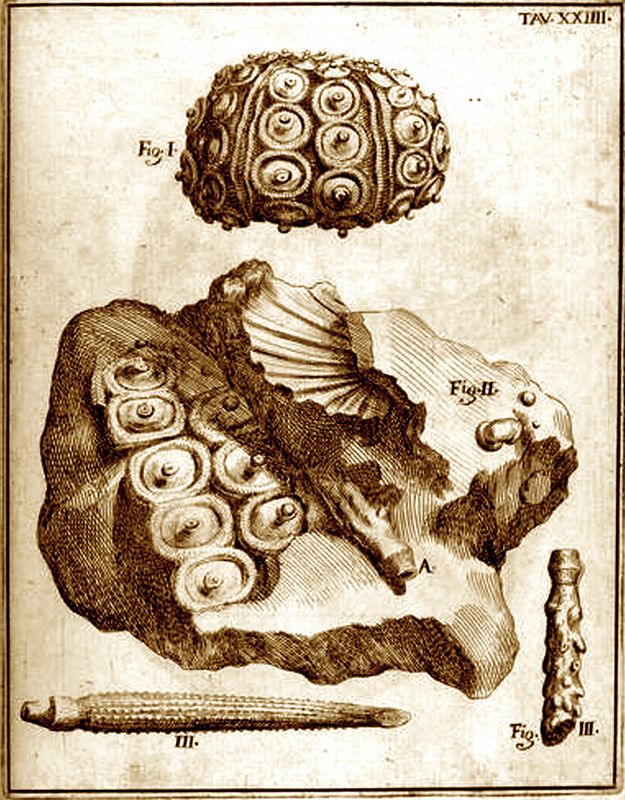Athena Review Image Archive ™
Scilla, drawings of marine invertebrate fossils (1670)

Drawings of marine invertebrate fossils (Scilla 1670, tab.24.)
Agostino Scilla (1629-1700) was a late Renaissance artist and naturalist. He collected many fossils from Messina, Calabria, and Malta. He saw similarities between the everyday bones, teeth, and shells of local sea-life and the Miocene (23-5 mya) fossils of the region.
Scilla’s findings were published in 1670, alongside 28 tables with consistently accurate drawings, in a book entitled La vana speculazione disingannata dal senso ("The vain speculation disillusioned by the senses"). This publication is one of the earliest that used scientific observation and reasoning to argue that fossils are the remains of plants and animals from the past.
Scilla's caption to Table 24, shown in the figure, reads;
"Tav. XXIV. Fig.1: Istrice di mare petrificato e conservatissimo. Delle colline di Messina. Fig.II. Sasso di Malta bianco, con parte d'Istrice, ed una spine dell'ist esso petrificata, dibunona fortezza. Fig III. Spine d'Istrice petrificate, dette in Malta dal volgo, Bastoncini di S. Paolo.
"Tab.
XXIV. Fig.1: Petrified and well-preserved porcupines [echinoderms or
sea urchins] from the hills of Messina. Fig.II. White stone from Malta,
with part of an echinoderm, and a spine of the first petrified, of good
fortitude. Fig III. Petrified echinoderm spines, called in Malta
by the common name, 'chopsticks of S. Paolo'. "
.
References:
Scilla,Agostino 1670. La vana speculazione disingannata dal senso,lettera risponsiva Circa i Corpi Marini,che Petrificati si trouano in vari luoghi terrestri ("The vain speculation disillusioned by the senses, a letter concerning the marine remains, which are found petrified in various terrestrial places").
.Copyright © 1996-2020 Rust Family Foundation (All Rights Reserved).